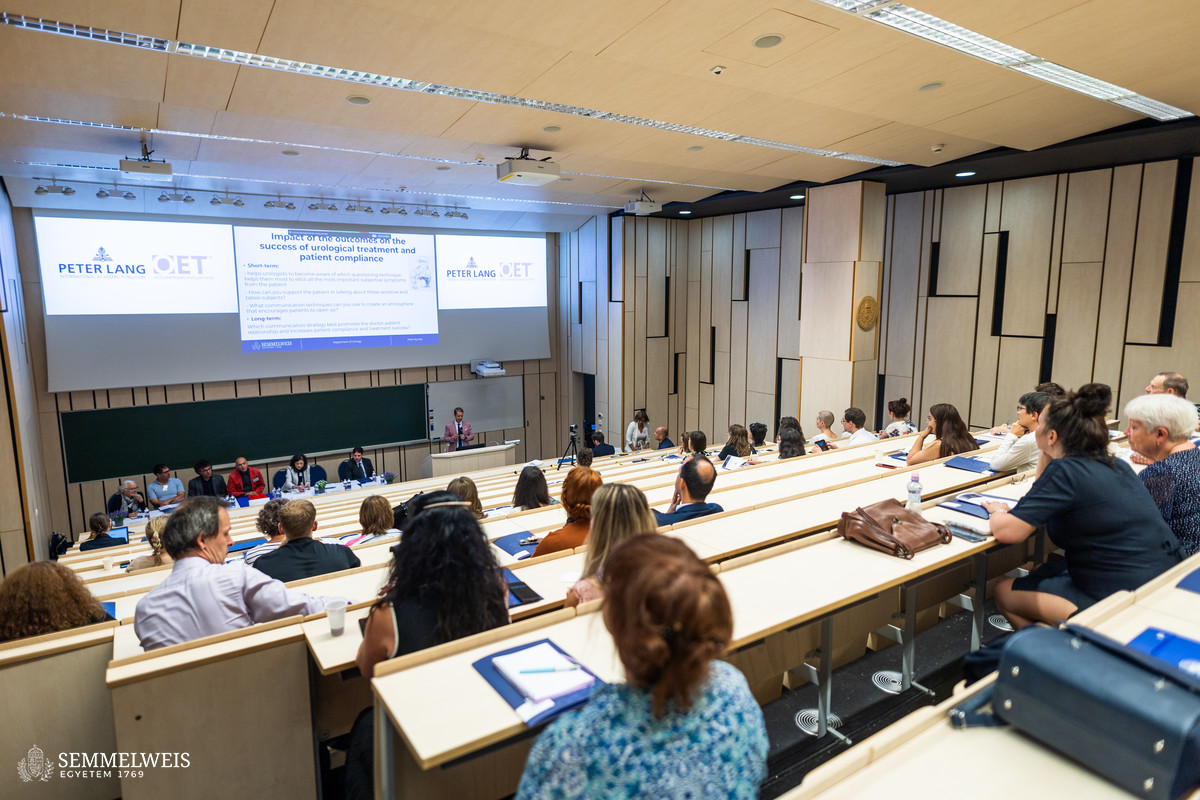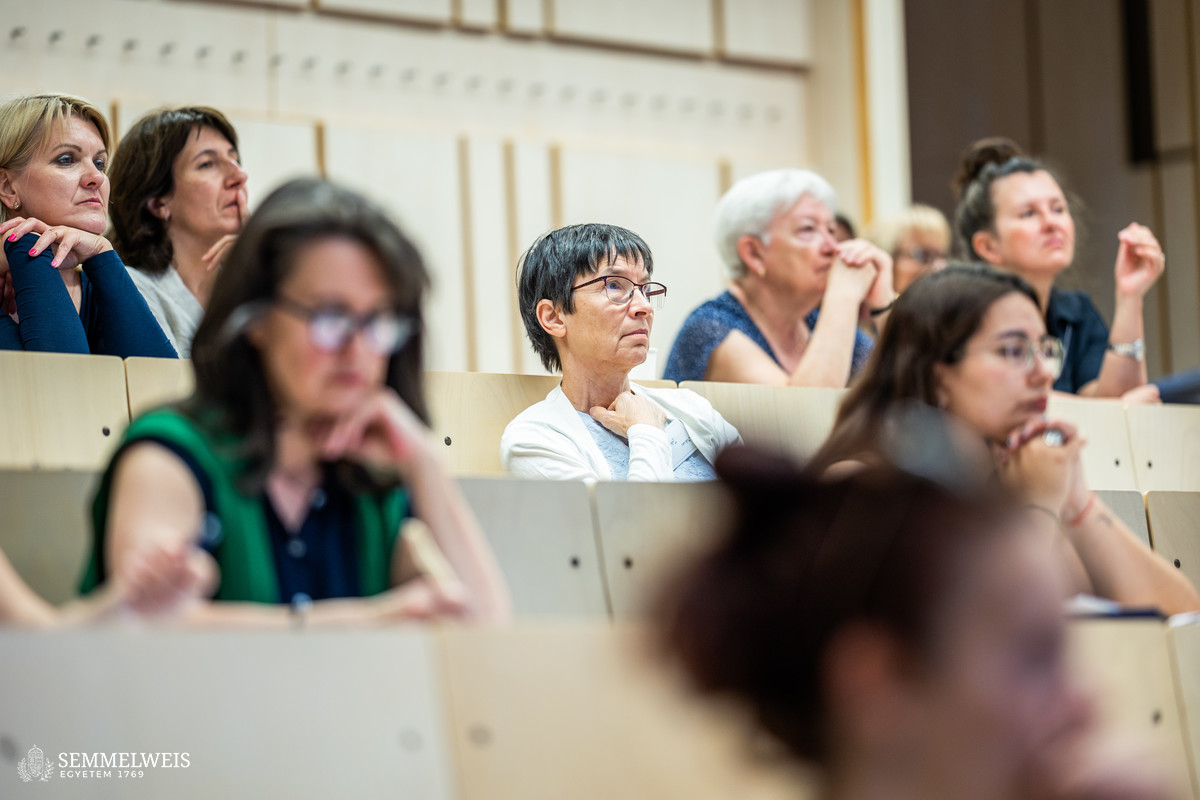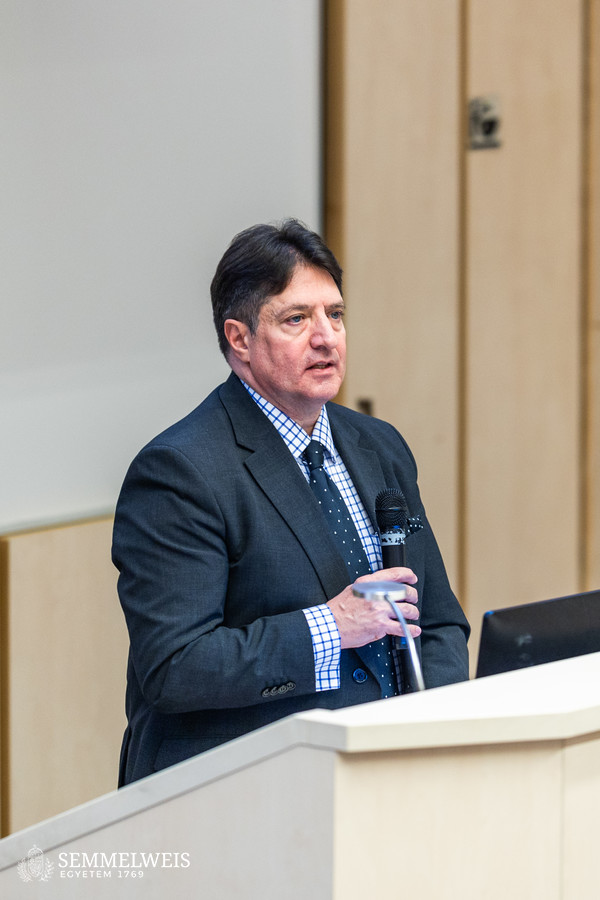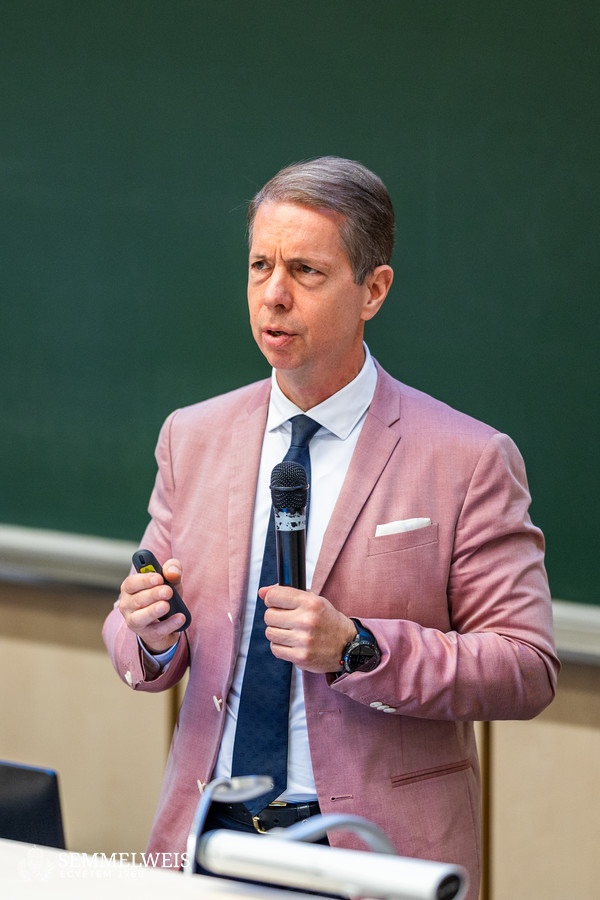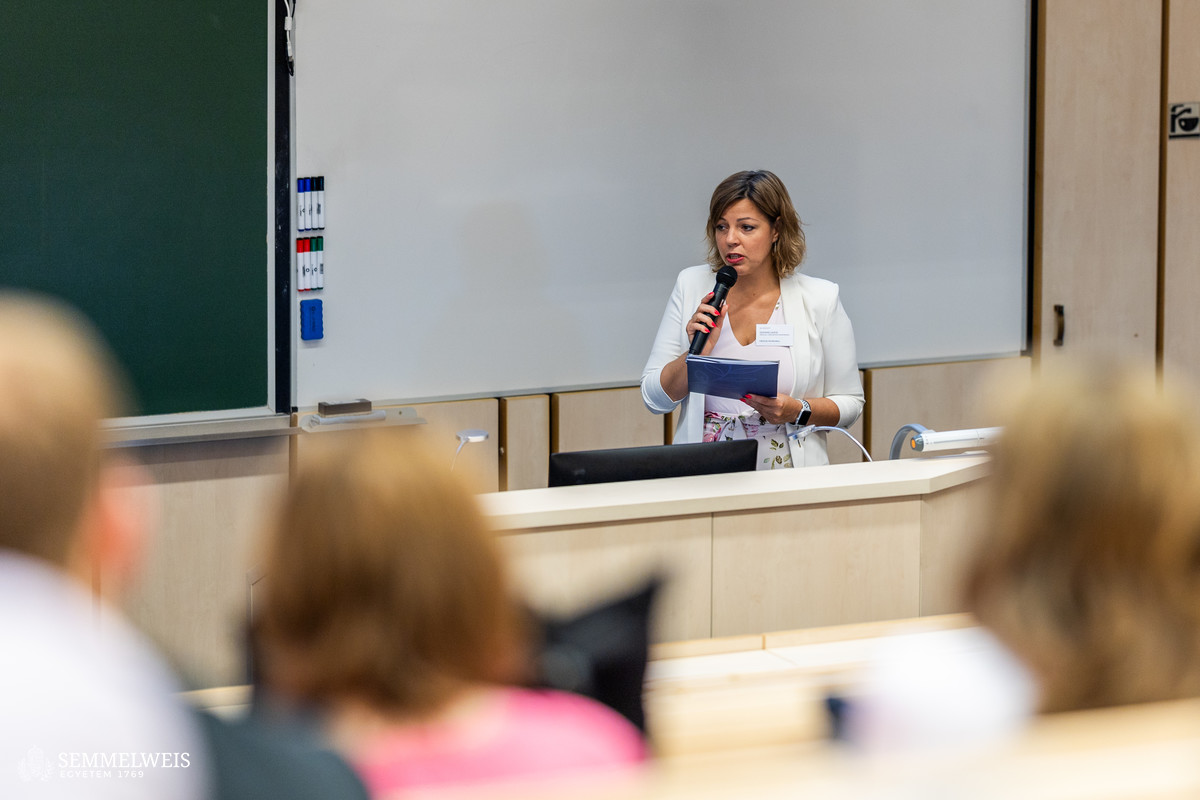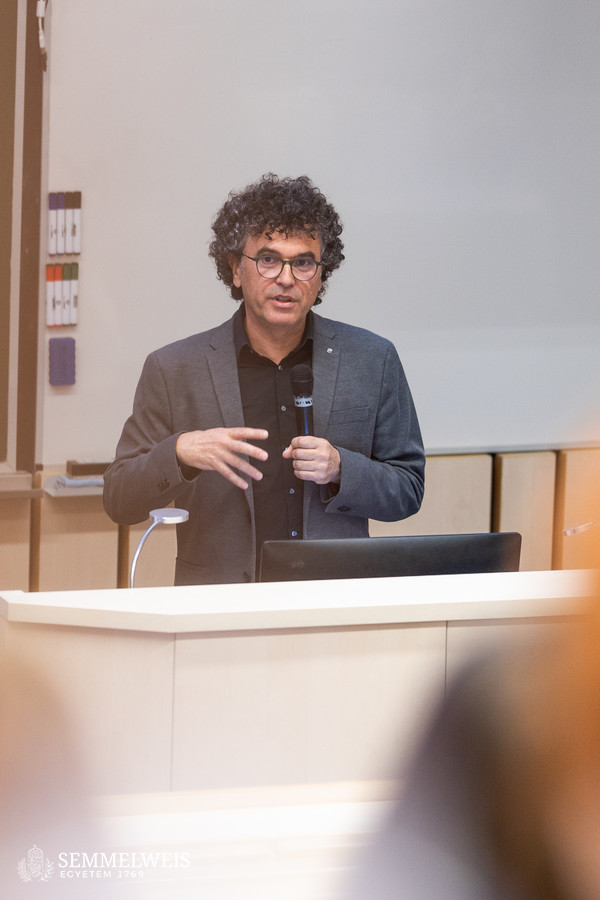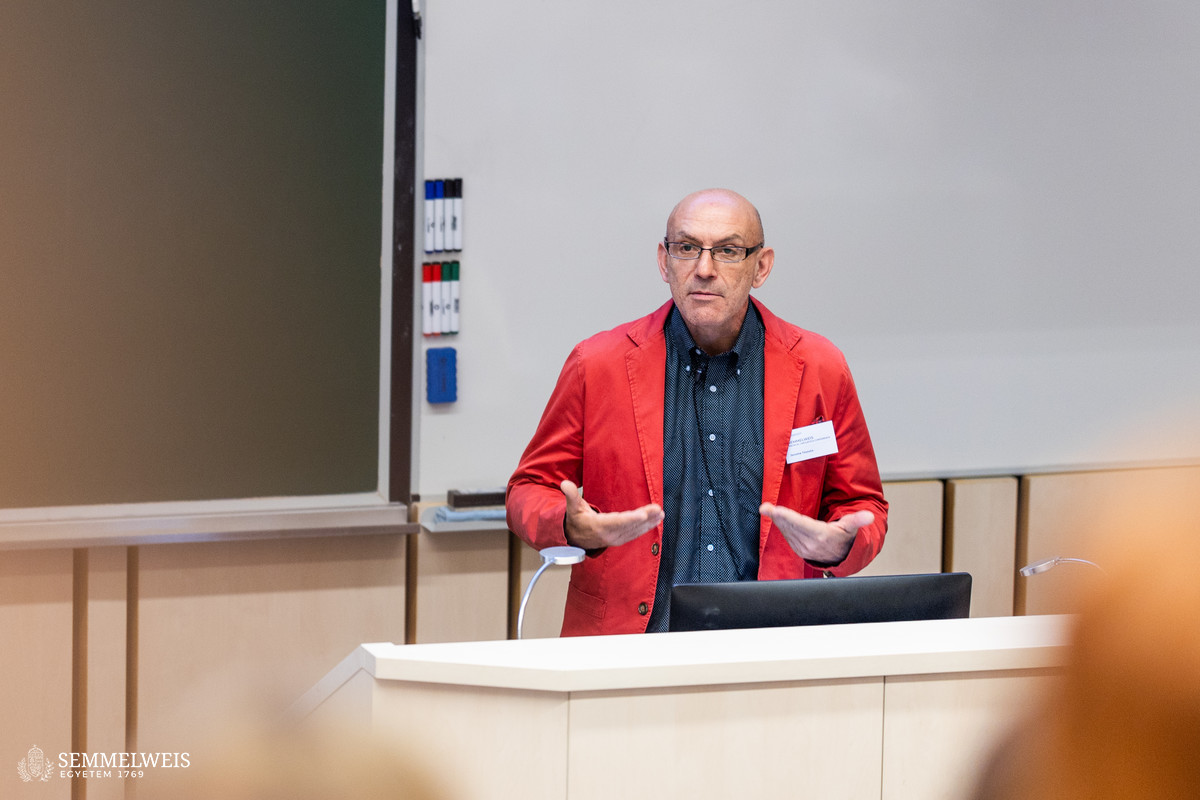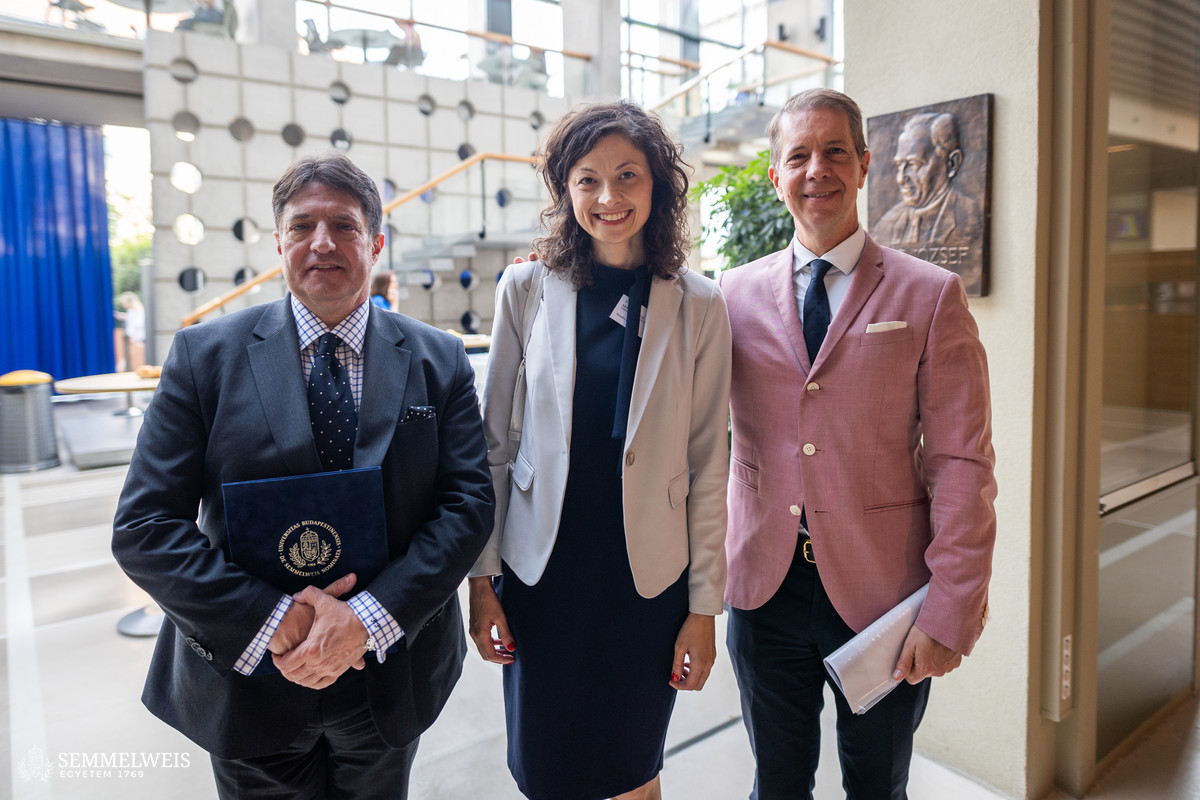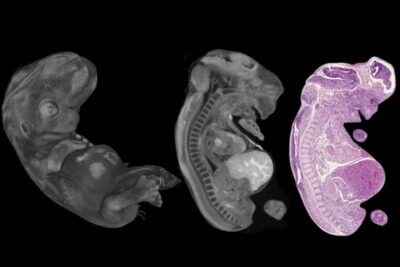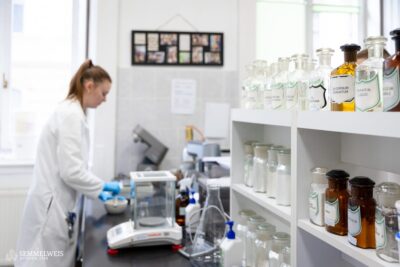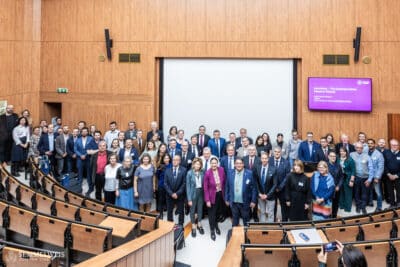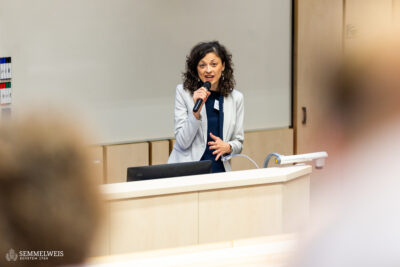 Under the guidance of Conference Chair and Director Dr. Katalin Fogarasi, the conference emphasized the importance of interprofessional collaboration in advancing the field of medical linguistics. Participants engaged in enriching, multidisciplinary discussions traversing medical terminology, medical translation and interpreting, patient-centred communication, speech analysis, and intercultural medical communication. Standing at the forefront of this field, the Institute of Languages for Specific Purposes at Semmelweis University not only organizes the conference series but also provides invaluable publication platforms for researchers and scholars to disseminate their work.
Under the guidance of Conference Chair and Director Dr. Katalin Fogarasi, the conference emphasized the importance of interprofessional collaboration in advancing the field of medical linguistics. Participants engaged in enriching, multidisciplinary discussions traversing medical terminology, medical translation and interpreting, patient-centred communication, speech analysis, and intercultural medical communication. Standing at the forefront of this field, the Institute of Languages for Specific Purposes at Semmelweis University not only organizes the conference series but also provides invaluable publication platforms for researchers and scholars to disseminate their work.
At this year’s conference, Dr. Katalin Fogarasi announced a new opportunity for presenters to contribute to the prestigious volumes of the Semmelweis Medical Linguistics Investigations, published by Peter Lang Publishing.
This marked a significant milestone for the field, representing the growing recognition and elevation of medical linguistics as a distinct and vital field of study.
Moreover, Katalin Fogarasi expressed her commitment to establishing a dedicated medical linguistics academic journal, which will provide a highly-esteemed platform for scholarly discourse and research dissemination.
The conference was opened by Vice-Rector Dr. Péter Hermann, who began by acknowledging the multilingual and multicultural nature of the university. He celebrated the high-quality language instruction and the linguistics research at the Institute of Languages for Specific Purposes, and emphasized its role in enhancing the overall level of education at Semmelweis University.
The following presentation, by Dr. Péter Nyirády, Director of the Department of Urology, shared an interprofessional study on doctor-patient communication conducted by the Institute of Languages for Specific Purposes in collaboration with the Department of Urology. In sharing with the audience the preliminary results of the study, Dr. Péter Nyirády highlighted the importance of communication in clinical practice. He observed that this research supports the work of experts while also helping in the career orientation of students, arming the latter with skills necessary for internships in several countries, and for their scientific careers thereafter.
Plenary presentations followed, with each offering insights into key facets of medical communication and linguistics. Dr. Vicent Montalt from Universitat Jaume I enlightened attendees on some of the emerging complexities for translators in patient-centered communication, while Dr. Jerome Tessuto from the University of Campania Luigi Vanvitelli provided perspectives on bridging the credibility gap in alternative and complementary medicine discourse. Dr. Karin Birkner from Universität Bayreuth shed light on the challenges and best practices in telemedical neurological consultations, and Dr. Paul Neumann from Dalhousie University explored the adaptation of Latin anatomical terminology for the digital age. Dr. Wolfgang Imo from Universität Hamburg delved into the analysis of doctor-patient interactions, and Dr. Serge Quérin from Université de Montréal navigated the journey from the doctor’s terms to the patient’s words and back.
In addition to the plenary sessions, the conference also featured nine parallel sessions and a dynamic poster session, with 16 thought-provoking presentations that further enriched the scholarly discourse. Not forgetting hospitality, the Institute of Languages for Specific Purposes of Semmelweis University organised a memorable conference dinner and a Budapest city tour, providing attendees with invaluable opportunities for personal and cultural exchanges outside the conference halls.
In summary, the Semmelweis Medical Linguistics Conference 2024 was an academic and social success, highlighting the growing significance of interprofessional collaboration in healthcare communication and the role of linguistics in enhancing patient care and outcomes. With its comprehensive agenda, esteemed speakers, and vibrant atmosphere of academic exchange, the conference has left an important mark on the field, inspiring participants to continue pushing the boundaries of medical linguistics, and fostering innovation in healthcare communication practices.
Dr. Katalin Fogarasi, Dr. Dániel Mány – Institute of Languages for Specific Purposes
Photos by Bálint Barta – Semmelweis University
